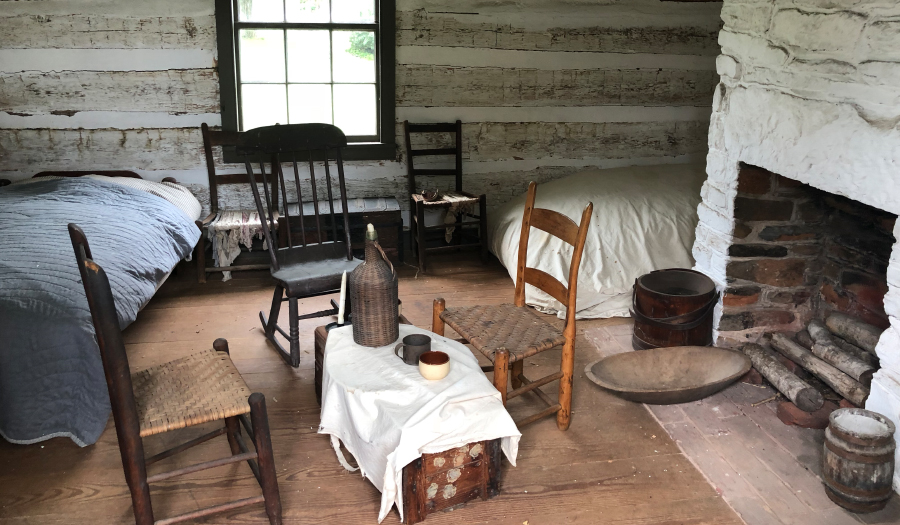
How did the manufacture of furniture become a signature industry for western North Carolina? Was it the wood? The people? The times? In fact, it was all of these. The region was not unique in fostering business that supplied the rest of the nation with home furnishings. Other people in other places made furniture too, some made better, some worse. For those early Tarheel entrepreneurs, the effort to use machinery to craft wood into necessary household implements was just the next logical step, a better way to make a living than by farming.
When Adam Sherrill and his entourage crossed the Catawba River around 1747 looking for a place to live, he brought with him very few of the things he would need to set up housekeeping. A Bible, tools, perhaps a chest for holding valuables, and a few provisions were about it. Sherrill knew that the rest could be created from the raw materials around, which included wood. Therefore, the first tables, benches, even the house they inhabited, were a product of the forest. Building what was needed upon arrival was a given for pioneers.

An early pioneer home complete with handmade furniture
As the years passed and wealth and the population grew, a person could make a living crafting furniture for others. The cabinet maker has been described as the second most important person in the creation of any community only behind the blacksmith. The whiskey distiller was third.
The division of labor that came with “civilization” meant that a person handy with an ax, a maul, and a glut could thrive building wardrobes and sideboards to sell and trade. Most houses of the antebellum era did not have closets since the storage spaces were counted as separate taxable rooms. It was up to the cabinet maker to fashion storage space for clothing.
More modern homes were a step above the utilitarian log cabins. A family of means (in other words, wealthy) could afford the time to make dining a big deal. Larger, more ornate tables and chairs we built for dining rooms. A sideboard was the place where servants parked the food before serving it in multi-course meals.
Often, a cabinet maker was commissioned to build grand pieces to fit a fancy home. He brought his tools (and maybe helpers) to live at the place where he (and exclusively it was a “he”) resided until the pieces were finished, which could take up to a year or more to construct. Wood was chosen on-site, sawed, dried, and honed into components necessary to serve the client. Sometimes the cabinet maker would sign his pieces, sometimes not, but the finished product always held a proud place in the home. Some remain to this day, standing in the spot where they were originally situated, as much a part of the house as the walls.
Ultimately, itinerant cabinet makers began to give way to established cabinet shops where artisans (who studied under an earlier master) could settle down and let buyers come to them. Western North Carolina had at least one in every community prior to the Civil War. From that tradition came something bigger, but not until the devastating conflict turned the sons of veterans toward a more industrial mindset.
Examples of finely crafted pieces by these cabinet makers are on display at venues like the Catawba County Historical Museum in Newton, Maple Grove in Hickory, the Burke County Historical Museum in Morganton, and the Caldwell Heritage Museum in Lenoir.








